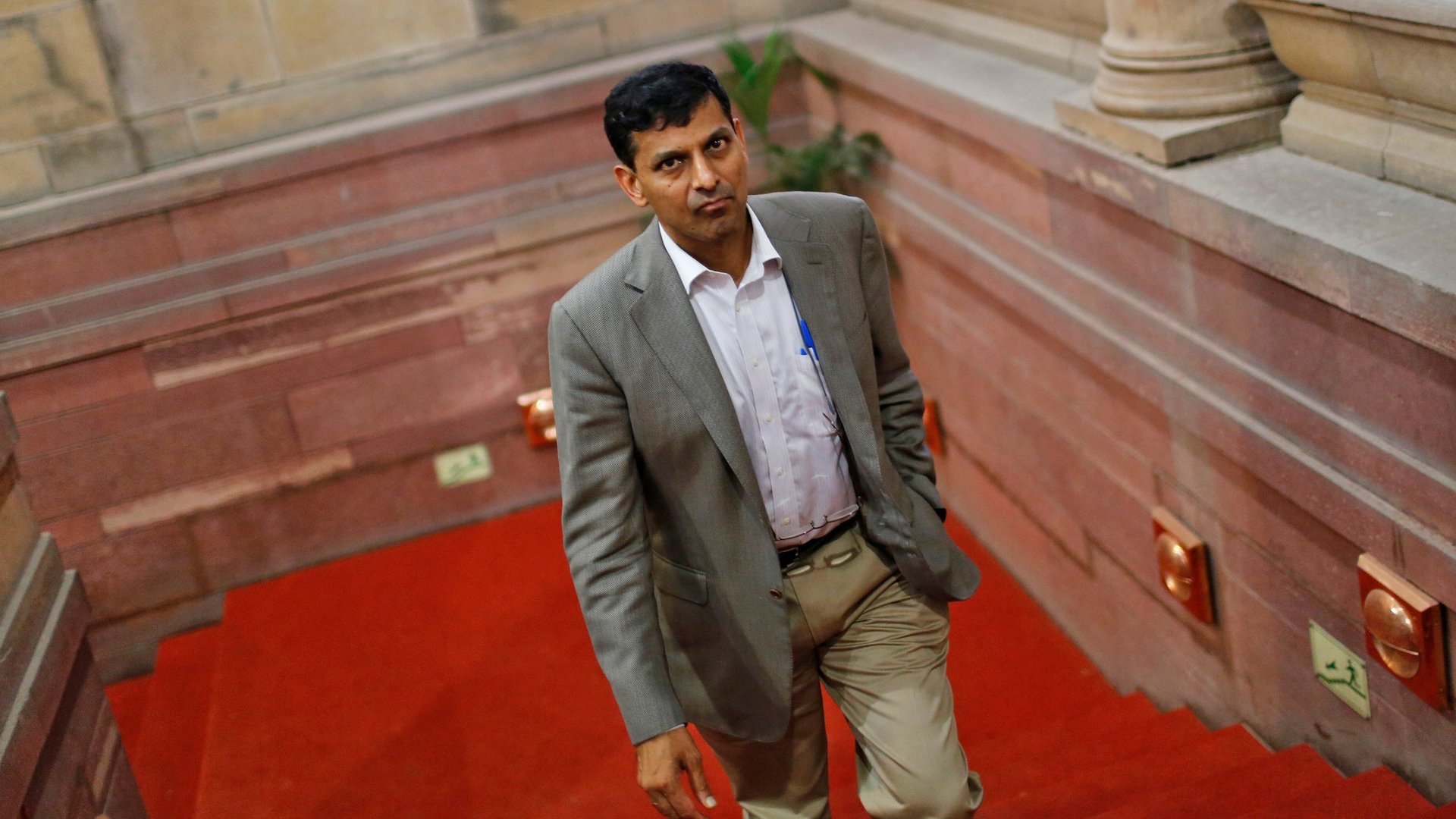India picked the right man at the wrong time to be its new central bank governor
It would be hard to name a more qualified candidate to take over the Reserve Bank of India. But despite his long list of career successes, Raghuram Rajan, who takes the helm in September, may do a terrible job—though it probably wouldn’t be his fault.


It would be hard to name a more qualified candidate to take over the Reserve Bank of India. But despite his long list of career successes, Raghuram Rajan, who takes the helm in September, may do a terrible job—though it probably wouldn’t be his fault.
Why? Because India’s growth has already slowed to a decade low, the current account deficit has ballooned, and the currency is suffering from a massive sell-off. In fact, even as the government announced Rajan’s appointment, the rupee hit a fresh all-time low before paring its losses to close at 60.77 to the US dollar.
Rajan, who became the youngest ever chief economist of the International Monetary Fund in 2003, has built a reputation as a world-class economist. His prescient warnings (pdf) about a coming financial crisis in 2005 ruffled many feathers (paywall) at the last Jackson Hole symposium Alan Greenspan attended as chairman of the US Federal Reserve. Accolades followed when history proved Rajan right, and won him a starring role in Inside Job, the Oscar winning documentary about the 2008-09 crisis. Rajan joined India’s government last year as the chief economic advisor, a move many saw an attempt by the finance minister Palaniappan Chidambaram to groom him (paywall) for the central bank job.
In Rajan, India will get a progressive thinker with an impeccable standing both at home and abroad. But India’s political realities may hinder his potential as an effective leader.
For one thing, the government faces elections in less than a year, which could lead to rampant government spending. Chidamabaram has so far kept a tight lid on expenses, contrary to the spending binges usually seen in the lead-up to elections. But with the ruling Congress party weakened by corruption scandals, the economic slowdown, and public antipathy towards incumbents, chances are the government will succumb to populist demands to spend more.
The central bank will also have to grapple with what the current governor D Subbarao termed as the “impossible trinity” of monetary policy. It cannot simultaneously maintain free movement of capital, a managed exchange rate and an interest rate policy that takes its cues from inflation.
The rupee may be Rajan’s biggest challenge. The currency has depreciated around 13% in the last six months despite repeated interventions by the central bank. The fundamental drivers of the weakness—a record current account deficit and capital outflows—are not entirely in the RBI’s control. It will also not be able to defend the rupee with direct interventions, given that foreign exchange reserves are at a three-year low, which is barely enough to cover imports for about six months.
The rupee’s fall threatens to stoke inflation. The consumer-price index climbed almost 10% in June on an annual basis. Any attempt by the central bank to rein in inflation through interest rate hikes will hamper growth, and is unlikely to go down well with the political bosses in New Delhi, especially in an election year.
The central bank’s relationship with the finance ministry has been strained in recent years due to excessive government interference. The outgoing governor D Subbarao came under fire for maintaining tight monetary policy despite repeated entreaties from the government to ease rates to boost growth. His predecessor YV Reddy also had public disagreements with the finance ministry, as he favored using rate hikes to cool an overheating economy. Rajan’s ability to defend the RBI’s turf will depend largely on his relationship with the government.
So far, Rajan hasn’t been keen to play politics. A free market advocate, he firmly believes that high government spending has depressed India’s economy. In a column he wrote since taking over as chief economic advisor, Rajan criticized the prevailing economic thinking of the government.
In addition to more investment, India needs less consumption and higher savings. The government has taken a first step by tightening its own budget and spending less, especially on distortionary subsidies.
Rajan has also been a outspoken critic of cronyism and corruption, something that will make influential figures in both the government and the corporate world uncomfortable.
After the announcement of his appointment as the new RBI governor, Rajan told reporters that there was no “magic wand to make the problems disappear instantaneously.” He may soon realize that balancing the politics and economics of his new role requires a dose of wizardry.